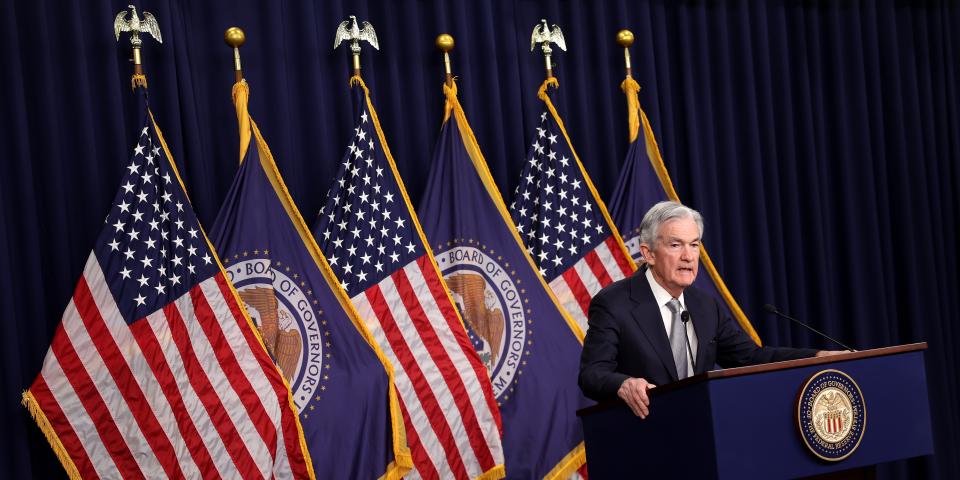
-
Ideally, the Fed will cut rates by half a point without raising growth concerns, Morgan Stanley says.
-
CIO Mike Wilson noted that the bond market is behaving as if the Fed is behind the curve.
-
He said defensive and quality stocks are worth owning after Wednesday’s rate cut.
Wall Street is gearing up for a crucial interest rate cut announcement on Wednesday, and there is still uncertainty about how far the Federal Reserve will go.
From Monday morning the CME FedWatch tool showed that the market is pricing in a 59% chance of a 50 basis point cut. According to new research from Morgan Stanley, that would be the best possible outcome for stocks. But there is a caveat: half a point must be shortened And prevent the market from worrying about economic growth.
“In the very short term, we think the best-case scenario for equities this week is that the Fed can deliver a 50 basis point rate cut without raising growth concerns or removing any remnants of the yen carry trade – that is say purely a reduction in insurance premiums.” “Ahead of macro data expected to stabilize,” Chief Investment Officer Mike Wilson wrote in a note Monday.
In the months leading up to the Federal Reserve’s policy meeting this week, worsening labor data has convinced investors that the central bank must start cutting borrowing costs to avoid an economic slowdown.
According to Morgan Stanley, the Fed may want to cut by 50 basis points because the bond market indicates that monetary policy is lagging: if interest rates remain high for longer, there is a risk that something in the economy will break.
At the same time, some analysts have noted that an aggressive cut could be the Fed’s way of recognizing the problems in the economy.
Ahead of the rate cut, Morgan Stanley suggested investors increase their exposure to two stock cohorts that have historically performed better in similar environments: defensive and high-quality.
Part of the reason is due to increasing concerns about growth. While the S&P 500 index shows strong belief that the Fed will achieve a soft landing and 15% EPS growth by 2025, internal market data tells a different story: investors are piling into defensive stocks for fear of a delay.
In this context, defensive performance against cyclical stocks is the strongest since the last recession, Wilson noted. Defensive stocks include sectors such as utilities and consumer staples — groups that are less dependent on macroeconomic conditions to perform well.
“Defensive stocks tend to outperform cyclical stocks fairly persistently both before and after the rate cut. Large caps tend to outperform small caps both before and after the first Fed rate cut. These last two factors support our preference for defense and large cap in Fed cuts.” often come in a later cycle environment,” Morgan Stanley said.
Read the original article Business insider
